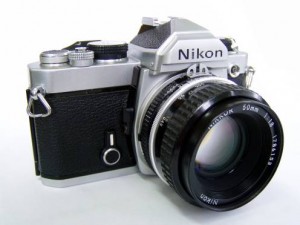
Violence and civil unrest often spark a reactionary response not only in people, but in policy as well. Incidents such as the officer-shooting of Michael Brown in Ferguson, Missouri have stood to exacerbate this type of response. This is true even when the evidence seems clear. Events such as the shooting of Michael Brown have motivated police departments around the country to start using officer-worn body cameras.
To date, there have been three autopsies conducted on Michael Brown. All three have been consistent in as much as the physical evidence seems to corroborate the Police Officer’s account of the altercation between himself and Brown. None the less, many of the interested parties in this case have been looking for a way to increase accountability. Enter the age of Police Body Cameras. New technology such as Taser’s Axon Body or Axon Flex, VIEVUE’s LE3, or the Bodycam by Pro-Vision are all wearable audio/video recording devices.
The Axon Body, LE3, and Bodycam are all body-worn cameras that can be clipped to an officers shirt, jacket, or ballistic vest. They’re capable of recording both audio and video in high resolution in whatever direction the officer’s body is facing. The Axon Flex is unique in that it is a “point-of-view” on-officer camera, worn as eyeglasses. The Flex will see and record whatever the officer is looking at. Officer worn cameras start at around $400 and go up to around $1,000 per device.
In an age where nearly everyone has a smartphone and where surveillance camera systems are all around (able to make detailed recordings of an event) it may be considered prudent that Law Enforcement be provided the means to record their incidents and encounters as well. This is especially true when the public is demanding more accountability from officers and the agencies and departments that govern them.
Although it is clear that police wearing a device that records nearly all aspects of an altercation seems like a good idea on the surface, it does come with both positive advantages as well as some inherent negative aspects.
Positively speaking, the body cameras will allow for a department to have a digital and reviewable record of the events as they transpired. The audio and video clips can be studied, enhanced, and scrutinized for months, or even years, after the event to determine what went right, what went wrong, and what can be learned from the incident. Studying the tactics used in recorded events may help to establish better operating protocols within a department which may improve overall safety for both the officers as well as the public. Imagine if Darren Wilson, the Officer who shot Michael Brown in Ferguson, Missouri, had been wearing such a camera. The video evidence could be used to answer many questions as to what really happened that day, and it would assist in making sure that justice is served properly and quickly. Further, having such video evidence readily available could save millions of dollars in lawsuits, lost work hours, etc.
However, there may be drawbacks to officers continuously wearing such body cameras. Foremost may be the cost. Take for instance the LAPD as they currently have over 10,000 active police officers. Body cameras may not be needed for every officer, as some officers do administrative or investigative work, but if such a department purchased cameras for ⅓ of a force that sized, it may cost between $1.4 Million and $3.3 Million, and that is only for the cameras themselves. Such costs do not necessarily reflect maintenance of the equipment, storage of the audio and video evidence, processing and enhancement of the evidence, and so on. Further, many officer’s do not like the idea of every word they say or everything they do being recorded and stored indefinitely. This could lead to a decrease in moral or recruitment, which may in turn make it harder for the department to keep the public protected. One could simply ask themselves how willing they would be to allow themselves to be recorded every moment while at work?
It is almost a certainty that as technology continues to improve, so will the effectiveness of our law enforcement. On-officer video and audio recording technology such as the body cameras made by Bodycam, Axom, or VIEVUE are definitely intended to improve law enforcement effectualness. Twenty-five years ago, ballistic vests were only worn by some police officers, now they are the standard. Law Enforcement departments and agencies will continue to consider which cameras to deploy, and when to implement them, but it is only a matter of time before police-worn body cameras are another standard adopted by all police.